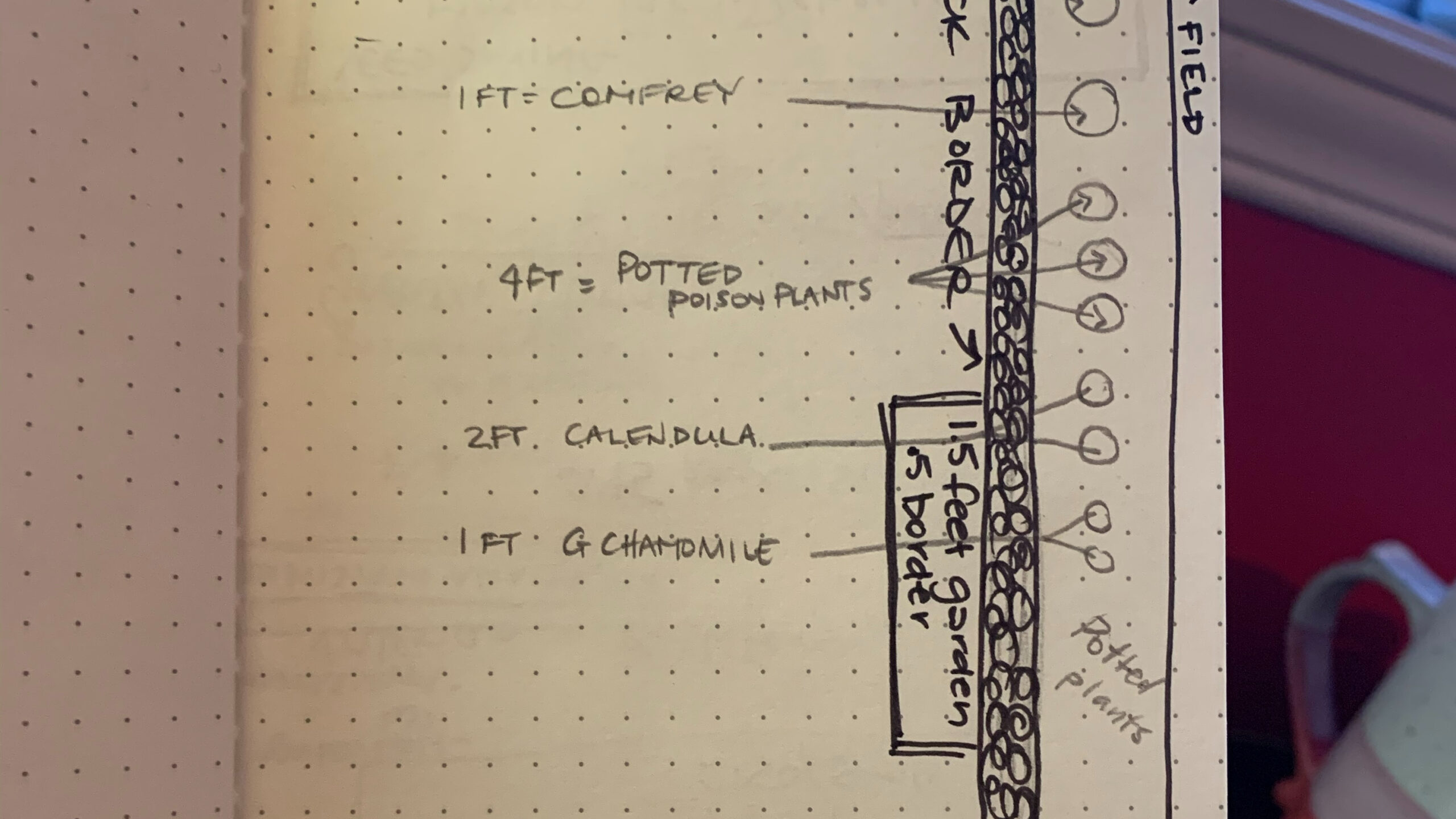In case you’ve never wandered down the rabbit hole that is garden planning, let me start by telling you that this is a whole new world for me. I ventured down in last winter and it’s kind of blowing my mind! I never realized there was so much more to gardening than just putting things into the earth!
Case in point, this year I wanted to up my gardening game by incorporating more healing plants, many of which also have witchy associations. As you can see in the image below (which is only one of many such lists), I started with way too many plants, especially given that I’m not just planting the plants, I’m looking to get to know the spiritual energy of said plants.

I quickly realized that my list was going to be too big. Last summer I tackled mandrake, datura, henbane, and belladonna (in addition to the lavender, poppies, and various other vegetables and ornamental flowers I’ve been growing in the front of my house for years) and I found it challenging. This was in part probably due to the fact that I really didn’t know what I was getting into with my poisonous plants or with starting plants from seeds so the learning curve was steep.
This year, I’m adding to the mix but some of the plants I’ll purchase as seedlings to save me the stress of stratification or having SO MANY seeds. I really only want 1 or 2 plants of each, not 16 (which is how many mandrakes I currently have – apparently Mandrake loves me).
The final list of plants I’m going to work with this summer include the following.

The next thing that emerged from my research was the realization that the plants I thought I’d put in the wasted space by the side of my house might not thrive in said location because the houses block out too much light. If I keep the plants near the ends, they’ll likely do well but since I’m only going to plant 1 or 2, I’m probably going to plant them elsewhere. If I get seeds, I may take them and drop them in the space as way to rewild the area (yay for sustainability activism in my suburban home).

I’ve drafted up a game plan to use the fence line at the back of our property but of course, I still have to think through spacing and companion planting/soil types for each plant on the list to ensure that I’m not placing plants requiring quick draining soil next to plants that like wet soil. Like I said… lots to think about when planning out a garden!
But I am excited about the next incarnation of my gardening adventure, specifically because I’m choosing medicinal plants that I hope to use in skin products for my family and friends. The focus this year isn’t overtly witchy but let’s face it, all the herbs have a link to magic in some way anyways and I’ll be doing some witchy stuff with said plants. Calendula for example, is linked to Tiphareth (the Sun) and can be used in workings devoted to solar energy. It’s also great for the skin so it does double duty!

The next part, aside from figuring out plant placement and compatibility in my garden is to figure out what phase of the moon I’ll be planting things in order to draw on biodynamic knowledge.
So for example, Calendula, used for it’s flowers, will be planted in a fire sign during the waxing moon. If I’m calculating it according to the seedling going into the ground, around May 27th, when the moon is in Leo and waxing, and well after the last frost date in our region, would be perfect for planting this particular seedling. There isn’t really an earlier date available given that our last frost date in this area can be as late as early May. With this in mind, I know that I’ll probably buy a well established plant from a local store instead of working from seeds because I’ll want it to be decently established given that it’s being planted so late.
So that’s where I’m at with planting my 2020 garden. The ground here is covered in snow and I’m already contemplating seedlings and garden layouts. On some level I feel like it’s a lovely way to transition from Yule to Candlemas (or Imbolc if you prefer). Like the seeds in the ground that are currently going through their natural winter stratification, getting ready for spring, I sit observing the winter landscape, dreaming of a spring garden.


I love love love this, Uma. This is super exciting – it translates through your sketches and lists:) I think it is appropriate for Candlemas too. I like considering Brigid at this time and her many mantles, be they cloaks of white snow, or dark soil and green plants, or red foliage.
This mild winter we’ve had has had me thinking of gardening for ages – but I feel ten steps behind you. I know so little about it, soils, learning and integrating the unique needs of each plant, pest control… For example, are there ways of planting the right kinds of plants next each other to help reduce pests? The only successful seedling I’ve ever had has been an avocado… I’m going to step up my balcony game.
I would like to hear more in your experiences with Lavender.